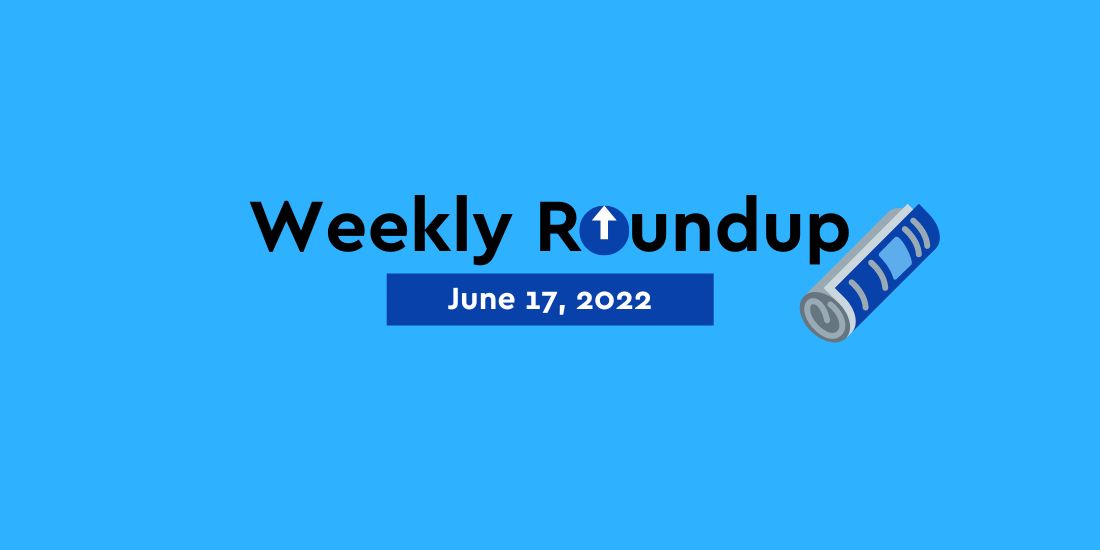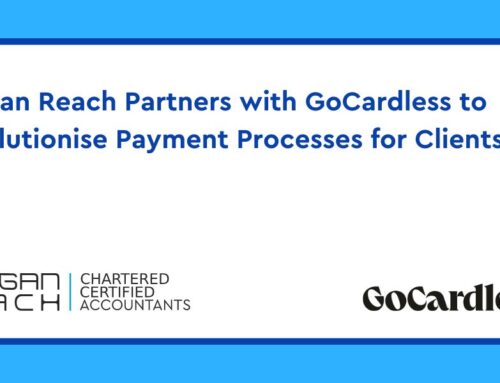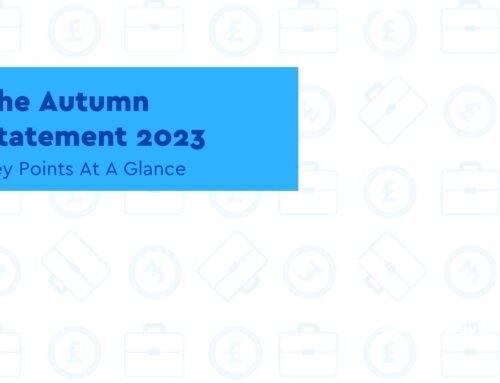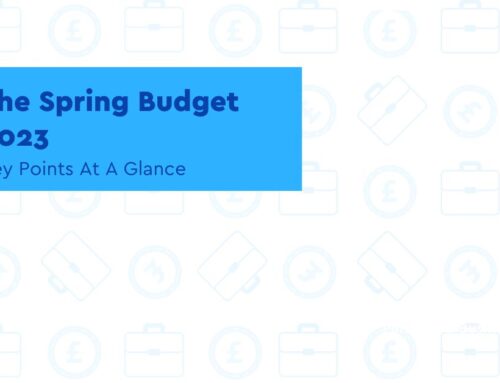News – PAYE
P11D and P11D(b) filing and payment deadlines
___________________________________
June 16, 2022
Key Points
- You also need to send any P11D forms due by 6 July 2022
- You must submit all your P11D and P11D(b) together in one online submission
P11D and P11D(b) filing and payment deadlines
Do not forget that you need to tell HMRC about any Class 1A National Insurance contributions that you owe for the tax year ending 5 April 2022 by 6 July 2022 at the latest. You also need to send any P11D forms due by 6 July 2022. Failure to do so may result in a penalty. Any Class 1A National Insurance you owe must reach HMRC by 22 July 2022.
Remember it’s important that you complete your forms P11D correctly the first time. If you make a mistake, it’s time-consuming to correct and your employees will pay the wrong tax in the meantime.
Further guidance on how to complete forms P11D and P11D(b) is available.
Here are some common mistakes to avoid.
How to send P11D and P11D(b) online
You can use the following quick and easy online methods:
Important to note, you must submit all your P11D and P11D(b) together in one online submission.
More information can be found at expenses and benefits for employers.
What you need to file
If you paid any benefits or non-exempt expenses, or if you payrolled any benefits, you need to file a P11D(b). Include the total benefits liable to Class 1A National Insurance contributions, even if you taxed some or all of them through your employees’ pay. The P11D(b) is used to report any employer’s Class 1A National Insurance contributions liability.
You need to send a P11D for each employee in receipt of benefits or non-exempt expenses unless you registered online before 6 April 2021 to tax them through the payroll. If you did not register online but then went on to tax some or all benefits through your payroll, you still must send a P11D form — but mark clearly (on each form) which benefits have already been taxed through the payroll.
If you have not already registered online to payroll your company benefits, you may wish to do so now ahead of the 2023 to 2024 tax year. If you can payroll all your benefits, it will mean you no longer need to send P11Ds. If you are taxing benefits through payroll and have not registered online to do so, you need our agreement each year to continue using this method. We normally only agree in exceptional circumstances.
You have not paid any expenses or benefits — when you should tell HMRC you do not need to file either a P11D or P11D(b), or both
You only need to tell HMRC that you do not need to make a return if we sent you a paper P11D(b), an electronic notice to file a P11D(b), or a reminder to file a P11D(b) letter. Visit declare no return of Class 1A National Insurance contributions to tell HMRC.
How to make sure you’ve filled everything in correctly
There are free, expenses and benefits from employment online toolkits which you can use to help avoid mistakes. Here are some tips based on some of the most common mistakes:
- do not put ‘6 April 2021’ in the start date or ‘5 April 2022’ in the end date for your company cars, unless they are genuinely the dates your employee received or returned a company car — if your employee already had the car before the start of the tax year, leave the ‘from’ box blank — if they kept the car into the new tax year, leave the ‘to’ box blank
- ensure you have included the approved CO2 emissions figure even if that figure is zero (for example fully electric cars)
- when reporting a hybrid car with an approved CO2 emissions figure between 1 to 50, ensure you have included the approved zero emissions mileage
- if you’re sending a paper P11D(b) form, do not forget to sign it
- only send one P11D(b) for each scheme, showing the total amount due, do not send a separate one for employees and directors for example — we treat each separate P11D(b) as an amendment to any we’ve previously received
- check your P11D(b) to see if you need to use the ‘adjustments’ at Part 4 before you complete Part 1 box C — If you do need to make an adjustment, you need to leave Part 1 box C blank
- when reporting a Beneficial Loan ensure that you’ve completed all parts of Section H
This article was derived from gov.uk: https://www.gov.uk/government/publications/employer-bulletin-june-2022/employer-bulletin-june-2022#p11d
News – Business Investment
Government must act on business investment to avoid recession
___________________________________
June 16, 2022
Key Points
- CBI recommends a full commitment is made to a permanent successor to the super-deduction
- The business body also calls for a permanent replacement to the Recovery Loan Scheme to support cashflow
With less than 40 days until parliament goes into recess, the countdown is on for the prime minister and chancellor to take the vital actions needed to spare the country from dipping into recession, according to the latest CBI economic forecast.
With the cost-of-living crunch showing no sign of abating, airports struggling to cope, national rail strikes on the horizon and Groundhog Day battles with the EU over the Northern Ireland Protocol, there is real risk that the economy stays a ‘distant second to politics’ this summer.
The CBI’s outlook suggests growth will soften as household spending turns downwards amid dented business and consumer confidence. As a result, the CBI has downgraded its GDP growth outlook significantly, to 3.7% in 2022 (from 5.1% previously) and 1.0% in 2023 (from 3.0% previously).
High inflation is the primary source of weaker growth. CPI inflation reached a 40-year high in April (9%), driven higher by a cocktail of challenges – ranging from supply chain pressures, rising commodity prices and war in Ukraine.
Inflation is expected to remain high into Autumn, rising to another peak in October (8.7%), given a likely rise in Ofgem’s energy price cap. The result is a historic squeeze in household incomes, which will lower consumer spending. This in turn will weaken GDP growth towards the end of this year and into the first half of next year.
Tony Danker, CBI director-general, said:“Let me be clear – we’re expecting the economy to be pretty much stagnant. It won’t take much to tip us into a recession. And even if we don’t, it will feel like one for too many people.
“Times are tough for businesses dealing with rising costs, and for people on lower incomes concerned about paying bills and putting food on the table.
“It’s as clear as day that business investment is one of the few bright spots left in our economy. The Super Deduction is one of the only reasons we have staved off the threat of recession for now – there must be a permanent successor.
“We’ve had weeks of politicking with the country standing on the brink of a summer of gridlock.
“There is only a small window until recess. Inaction this summer would set in stone a stagnant economy in 2023, with recession a very live concern.
“We need to act now to install confidence. This can wait no longer.”
What needs to be done this summer
Build momentum behind business investment ahead of the Autumn Budget:
- Make a full commitment to a permanent successor the super-deduction
- Cut approval times for new offshore wind farms from 4 years to 1 year
Boost confidence in the economy:
- Call for immediate talks to finally resolve the Northern Ireland Protocol impasse and get Brexit done – resist unilateral action with both sides getting on with the job of finding a negotiated outcome
- Act as an honest broker between rail companies and unions to find solutions to avoid a summer of train chaos
- Announce a permanent replacement to the Recovery Loan Scheme to support cashflow
Take immediate steps to alleviate labour and skills shortages:
- Get real on industry concerns over labour shortages – get going on a new shortage occupations list and add sectors with obvious shortages, like aviation, until that review can be completed.
- Add immediate flexibility to the apprenticeship levy for one year allowing all employers in the country to use their levy funds to tackle labour shortages.
Capital spending is set to fall away in the second half of 2023 as the super-deduction ends, which is why the CBI has been calling for a permanent investment incentive to buttress growth into next year.
Meanwhile, the CBI expects a small rise in the unemployment rate – ending 2023 at 4.1% – as weaker economic growth weighs on hiring. Nonetheless, this still marks a relatively tight labour market, with many firms presently carrying vacancies.
Exports continue to underperform compared with our international peers, remaining 10% below their pre-Covid level at the end of 2023.
Rain Newton-Smith, CBI chief economist, said:“This is a tough set of statistics to stomach. War in Ukraine, a global pandemic, continued strains on supply chains – all preceded by Brexit – has proven to be a toxic recipe for UK growth.
“The bottom line is that the outlook for UK exports remains far worse than our worldwide competitors. This has got to change for the better.
“Business and government must work together to seek growth globally. As demand shrinks, competition for revenue increases. UK business must be more confident in identifying new markets and utilising all the tools at their disposal – be it from the private sector or public sector.
“Government also has an integral role to play. Against the backdrop of the rising cost of doing business and continuing supply chain pressures, easing trade flows is in everyone’s interests. It’s not just about lowering non-tariff trade barriers in Europe and signing FTAs.
“Post-Brexit regulatory reforms to support growth, innovation and sustainability can build competitiveness. But divergence for the sake of it could introduce further red tape and friction undermining that mission.
“Moreover, we can and must do more domestically to help our exporters too. Now that R&D allocations are known, let’s get that funding out the door quickly to the Advanced Research and Invention Agency and others.”
Key forecast data
Jobs & household spending
- Household spending is set to grow by 3.5% in 2022 and fall by 0.4% in 2023. In quarterly terms, household spending falls persistently from Q2 2022 to Q1 2023, before returning to growth.
- The main driver of weakness in spending is high inflation. CPI inflation is expected to stay elevated this year, rising to another peak (of 8.7%) in October. It will gradually fall back, settling towards the Bank of England’s 2% target in December 2023 (1.9%).
- High inflation means real household disposable incomes fall by 2.3% over 2022 – marking the largest annual decline on record (since the mid-1950s)
- We also expect a mild rise in unemployment in our forecast, as weakening economic growth weighs on the labour market. The unemployment rate rises to 4.1% by the end of 2023 (from its current level of 3.7%), which nonetheless suggests a still-relatively tight labour market.
Long-term outlook
- We expect business investment to grow until mid-2023, buoyed by the government’s super-deduction.
- However, business investment falls thereafter, as the super-deduction ends and weaker growth bites. Business investment ends our forecast 7% below its pre-Covid level (in Q4 2019).
- By the end of 2023, we expect GDP to still be 5% below its pre-COVID trend.
- Weak activity means that productivity growth stays lacklustre over our forecast. Output per worker only returns to its anaemic pre-COVID trend and remains 17% below its pre-2008 trend at the end of 2023.
Global outlook
- Following the large drag in Q1, we expect net trade to contribute positively to GDP growth throughout our forecast. However, this mostly reflects weak imports growth – which is hit by sluggish domestic demand – rather than strong exports growth.
- Recovery in exports is lacklustre over our forecast, reflecting softer global growth and trade, and a weak starting point for our projections. By the end of 2023, we expect UK exports to still be 10% below their pre-Covid level.
- Global GDP growth (in purchasing power parity terms) is predicted to be 3.1% in 2022 and 3.4% in 2023 – a substantial downgrade from our previous forecast (4.7% and 3.8%).
- We have downgraded our global GDP forecasts across the board this year, reflecting a weak start to the year (partly due to the Omicron wave) and high inflation hitting household incomes and spending across the world.
This article was derived from: Business Money: https://www.business-money.com/announcements/government-must-act-on-business-investment-to-avoid-recession/
News – VAT
Two-stage test will determine business activity for VAT purposes
___________________________________
June 16, 2022
Key Points
- The change in approach will affect businesses that receive grants or subsidies and any organisation or business carrying out non-business activities
- ‘Businesses can no longer rely on the old ‘business test’ to decide whether an activity is business or not
HMRC has clarified how it determines whether or not an activity is a business activity for VAT purposes, bringing in a two-stage test.
The ‘business test’ was originally based on a number of tribunal decisions dating from the 1980s. The change in approach will affect charity organisations, non-profit making organisations, businesses providing nursery and crèche facilities, businesses that receive grants or subsidies and any organisation or business carrying out non-business activities.
Now HMRC has confirmed that the old ‘six criteria’ test will no longer be used to determine business activity and will be replaced by a two-stage test.
HMRC’s long-standing policy has been that a business activity is possible even in the absence of a profit motive.
In the latest brief – which can be accessed here – HMRC states that it will no longer ‘apply the business test based on the six indicators from Lord Fisher and Morrison’s Academy [cases] in determining whether an activity is business.
‘The two-stage test is the approach that should be taken in determining whether an activity constitutes a business activity.
‘Businesses can no longer rely on the old ‘business test’ to decide whether an activity is business or not, but it can be used as a set of tools designed to help identify those factors which should be considered.’
The two-stage tests are:
Stage 1: The activity results in a supply of goods or services for consideration
This requires the existence of a legal relationship between the supplier and the recipient. The first step is to consider whether the supply is made for a consideration. An activity that does not involve the making of supplies for consideration cannot be business activity for VAT purposes.
Stage 2: The supply is made for the purpose of obtaining income (remuneration)
Where there is a direct or sufficient ‘link’ between the supplies made and the payments given, the activity is regarded as economic. The Court in Wakefield made a distinction between consideration and remuneration. Simply because a payment is received for a service provided does not itself mean that the activity is economic. For an activity to be regarded as economic it must be carried out for the purpose of obtaining income (remuneration) even if the charge is below cost.
This article was derived from: Accountancy Daily: https://www.accountancydaily.co/hmrc-sets-out-two-stage-test-decide-business-activity
News – Employers
Student loan interest rates capped
___________________________________
June 17, 2022
Key Points
- A rise in the rate of RPI due to global economic pressures meant student loan borrowers faced a 12% interest rate in September
- The government has capped interest rates to a maximum of 7.3% to protect graduates
The government has confirmed that student loan interest rates will remain at 7.3% from September 2022.
Normally interest increases in line with inflation, but the current 9% rate would have seen student loan rates rise to 12% while the base rate is only 1.25%.
A rise in the rate of RPI due to global economic pressures meant student loan borrowers faced a 12% interest rate in September and the government has capped interest rates to a maximum of 7.3% to protect graduates.
It will mean, for example, a borrower with a student loan balance of £45,000 would reduce their accumulating interest by around £180 per month compared to 12% interest rates. This is on the total value of the loan, as monthly repayments do not change.
Workers repay 9% of their income over the repayment threshold, which is currently £27,295 a year, £2,274 a month or £524 a week in the UK.
Higher and further education minister Michelle Donelan said: ‘The government has always been clear that where it can help with rising prices we will, and I will always strive for a fair deal for students, which is why we have reduced the interest rate on student loans down from an expected 12%.
‘I want to provide reassurance that this does not change the monthly repayment amount for borrowers, and we have brought forward this announcement to provide greater clarity and peace of mind for graduates at this time.
‘For those starting higher education in September 2023 and any students considering that next step at the moment, we have cut future interest rates so that no new graduate will ever again have to pay back more than they have borrowed in real terms.’
Monthly student loan repayments are calculated by income rather than interest rates or the amount borrowed. Unlike for commercial loans, repayments will stop for any borrowers who earn below the relevant repayment threshold.
For future borrowers, student finance will be put on a more sustainable footing. As announced in February, interest rates will be reduced so from 2023/24, new graduates will not, in real terms, repay more than they borrow.
HMRC collects student loan repayments from employers through the tax system. Self-employed workers settle loan payments through self assessment tax returns.
Latest Snippets
Paying Class 1A National Insurance contributions
Electronic payment for Class 1A National Insurance contributions declared on your P11D(b) return for the tax year ended April 5, 2022 must clear into the HMRC account by July 22, 2022.
Help ensure your payment is correctly allocated by providing the correct payment reference. Use your 13-character Accounts Office reference followed by 2213.
Adding 2213 is important because 22 tells HMRC the payment is for the tax year ended April 5, 2022 and 13 lets them know the payment is for Class 1A National Insurance contributions. The reference should have no gaps between the characters.
Class 1A contributions on taxable benefits are reported on form P11D(b) by July 6 following the tax year end and are due to be paid over to HMRC by July 22 after the end of the tax year to which they relate.
Over 3/4 workplace pension holders contributing less than 8% of total earnings
More than three-quarters (78.7%) of workplace pension holders in the UK were contributing less than 8% of total earnings in 2021, according to data from the Office for National Statistics (ONS).
The data, which looked at defined contribution (DC) pensions, group personal pensions, group stakeholder pensions and group self-invested personal pensions, showed that 1% of employees were not contributing anything to their pots.
More than a quarter (28.1%) were contributing less than 3% of earnings but more than nothing, while 49.6% were contributing at least 3% but less than 8%.
The ONS data also revealed that 6.8% of workplace pension savers were contributing 8% or more of total earnings but less than 10%.
Get In Touch
At Morgan Reach, we understand every business needs a little help now and again-especially when it comes to the financial side of things. Therefore, to help our clients and visitors we endeavour to cover as much of the business news as possible. If you are self-employed or run a business and need assistance and advice on how these news could make a difference to you or your business, feel free to get in touch with the experts at Morgan Reach. Our business growth experts at Morgan Reach will guide you through what support is available for you or your business as well as the latest news that may affect you.







